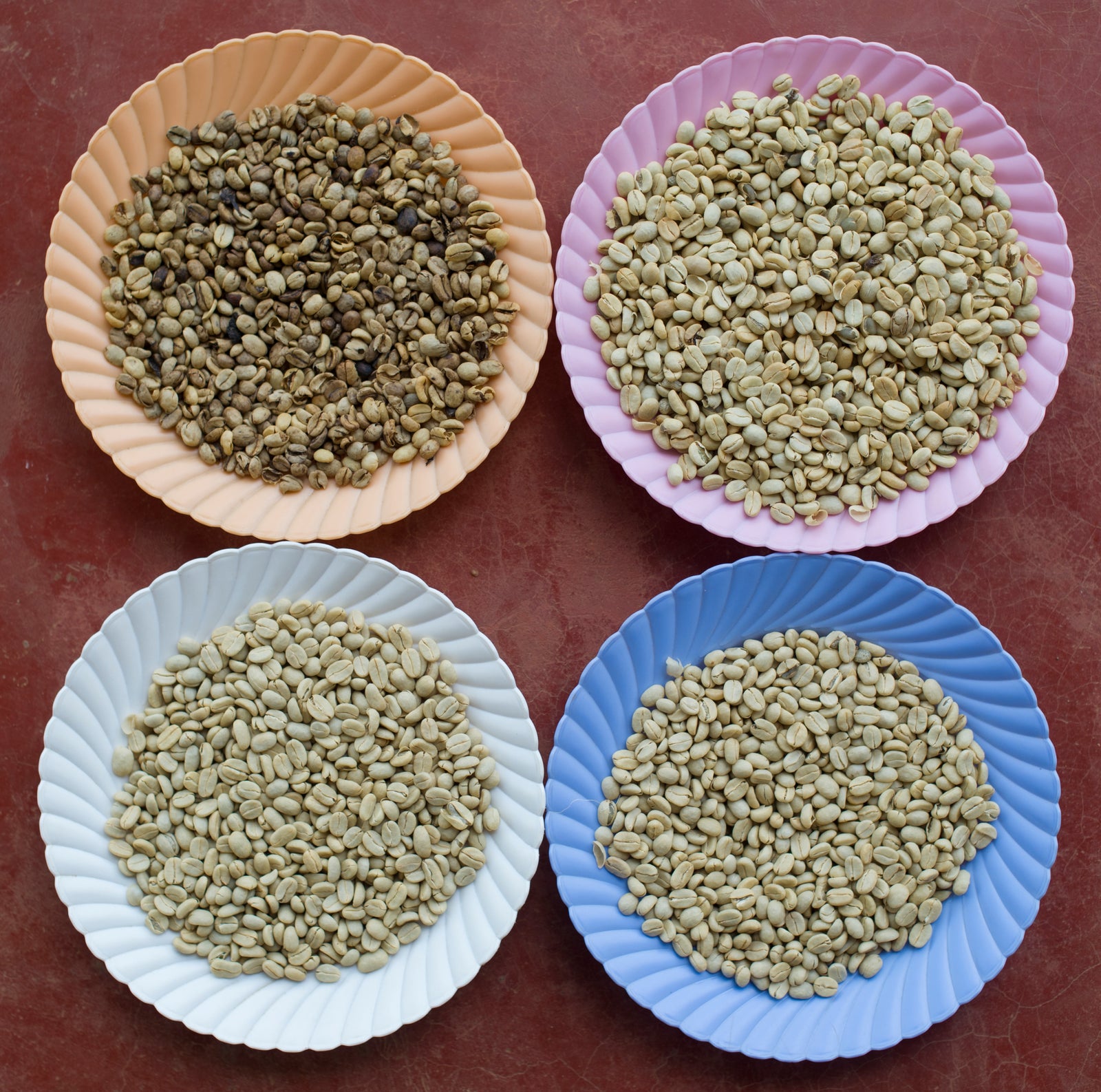Your Cart is Empty
Free Shipping All Orders +$45 *excludes B2B

In the world of coffee, the word “grading” has several overlapping meanings. Today we’re going to focus on two: grading as groups of coffee sorted according to quality and grading as coffee sorted according to size. Both are instrumental processes that happen between the harvest and the roast, and both have a huge impact on the eventual quality in your cup.

Immediately after coffee is harvested, it’s processed. Farmers deliver their beans to washing stations (where processing happens) with urgency – freshly harvested coffee begins to sour less than 24 hours after being plucked from the branch. There are several way to process coffee, but today we are going to focus on the one that make our Rwandan beans shine – Wet Processing with Fermentation.

After harvest, coffee cherries are sorted according to ripeness, and then poured into tanks of fresh water to ferment for several days. The cherry flesh, or “mucilage” begins to ferment, infusing the bean inside with a tart sweetness before falling off. The cherries are agitated to remove the rest of the mucilage, and then spread on racks to dry in the sun. This stage is carefully monitored to ensure that the moisture content of the beans falls within 9-13%. Moisture affects how well the bean will roast.

"Grade 3: Exchange Grade Coffee Beans: 50% above screen 15 and less than 5% below screen 15. Max of 5 quakers. Must be free from faults. 9-23 full defects.
Grade 4: Standard Grade Coffee Beans: 24-86 full defects.
Grade 5: Off Grade Coffee Beans: More than 86 full defects.” – www.coffeeresearch.org
*Fact: The Specialty Coffee Association of America only deals with Grades 1 & 2.

Size is particularly important, especially when it comes to roasting. Large beans will not roast the same way as their smaller counterparts, so a sample with a range of sizes will be unevenly roasted.
In the spectrum of coffees as a whole, higher quality beans will be grown in higher altitudes, by plants that take their time to produce relatively small, flavor-dense beans. However, in a sample where factors such as varietal, altitude, and cultivation are identical, the larger the bean, the higher the quality.

Beans are graded by being sifted through metal screens with holes of specific sizes. The grades are numbered according to the diameter of the holes, ranging from 8 to 20, with the number indicating 64ths of an inch. Grade 16 has holes 16/64’’ in diameter, Grade 10 is 10/64in, and so on. Although this method cannot be 100% accurate, a variation of 5% does not have a significant effect on the final batch.

So there you have it! If the “grade” is between 1 and 5 it means “grade as quality,” and if it’s between 8 and 20, it means “grade as size.” While this information digs a little deeper into the guts of coffee knowledge, it significantly affects the quality of your brews.
